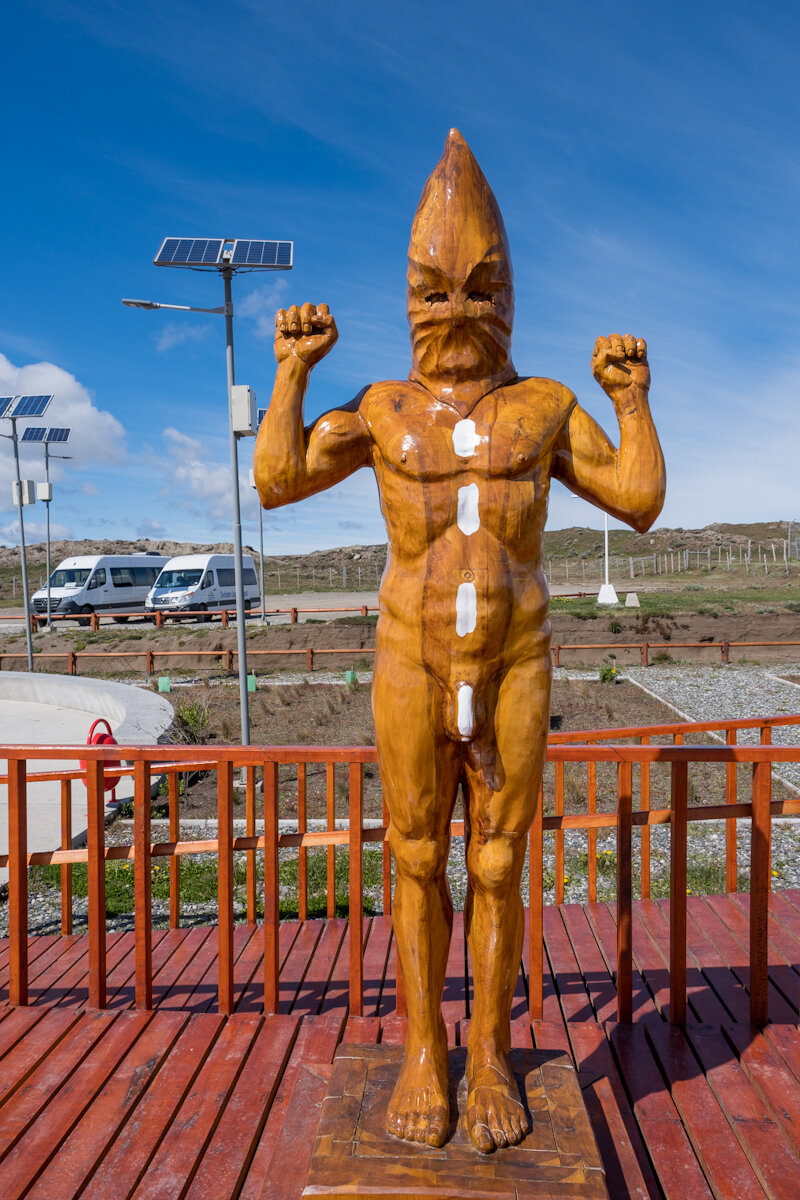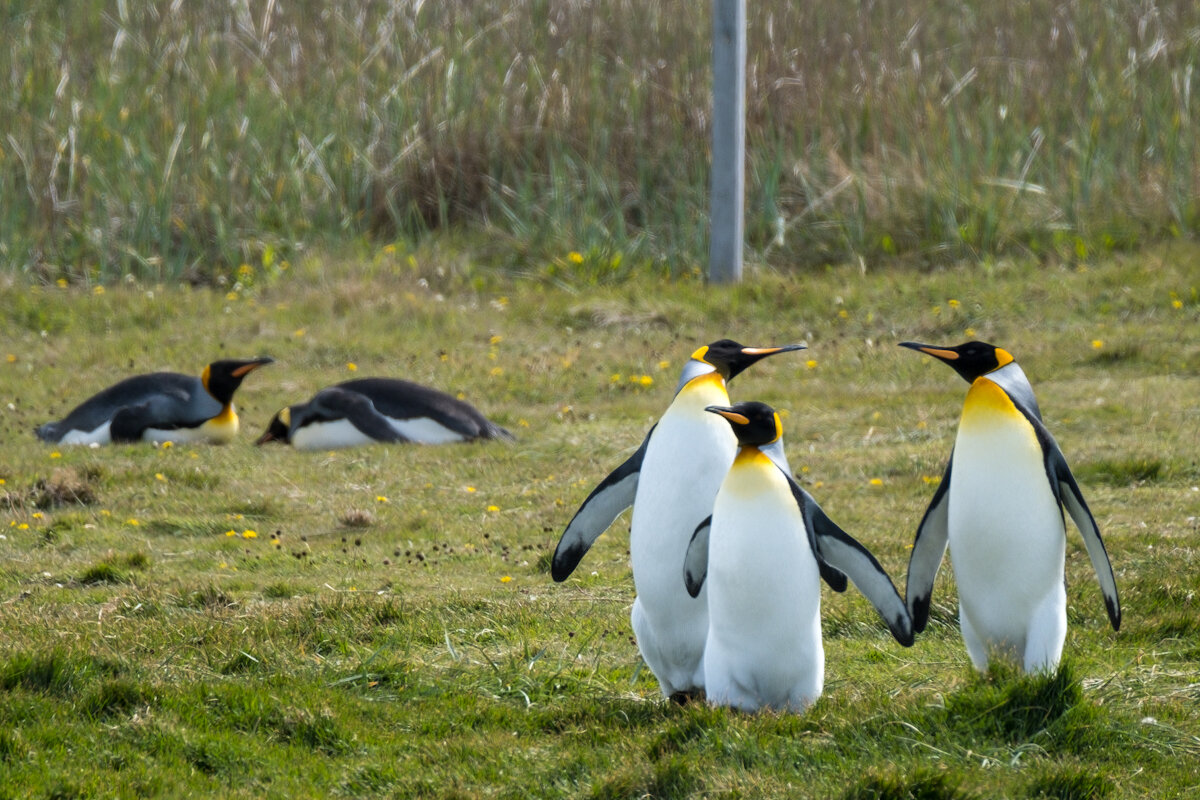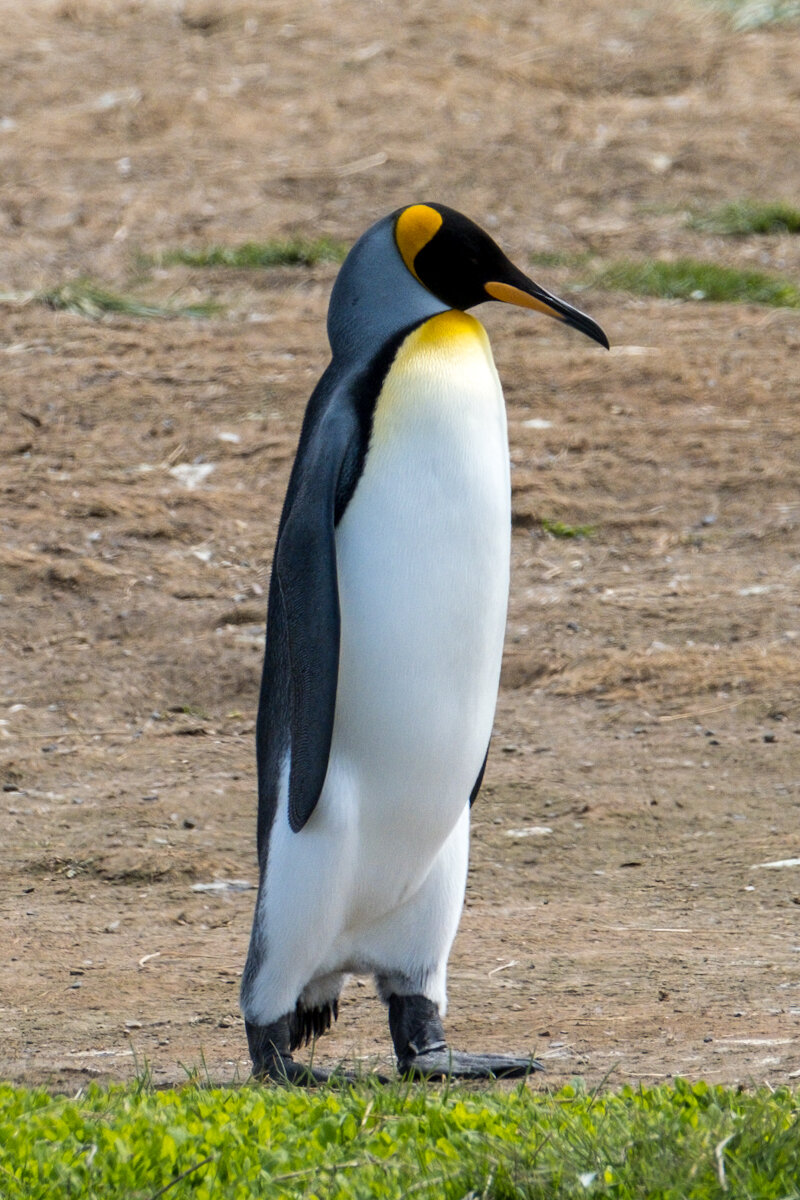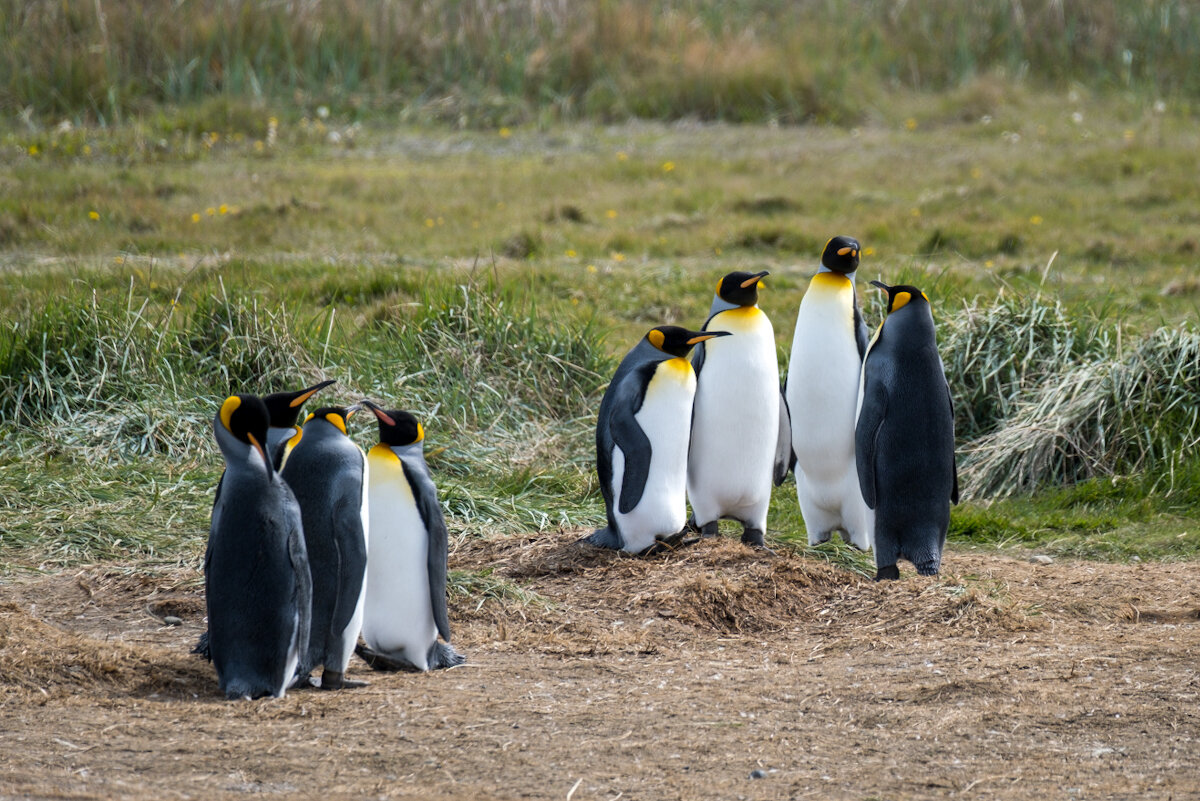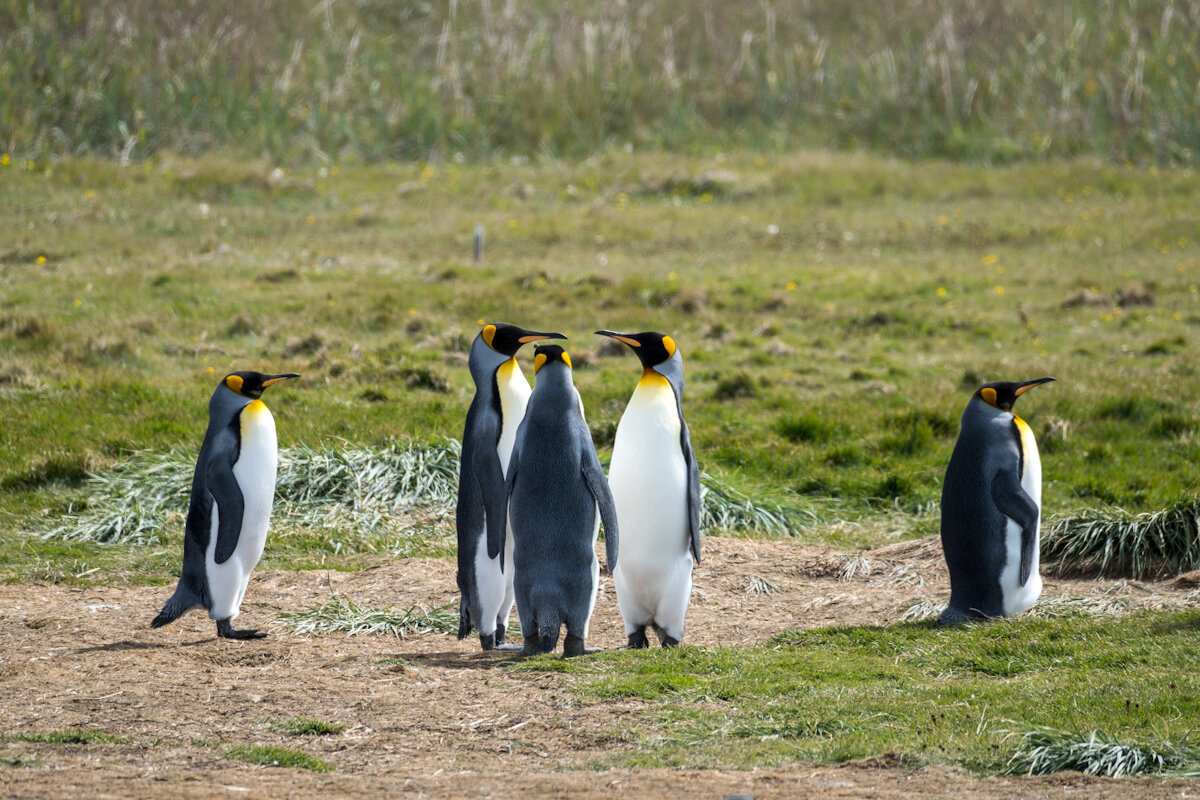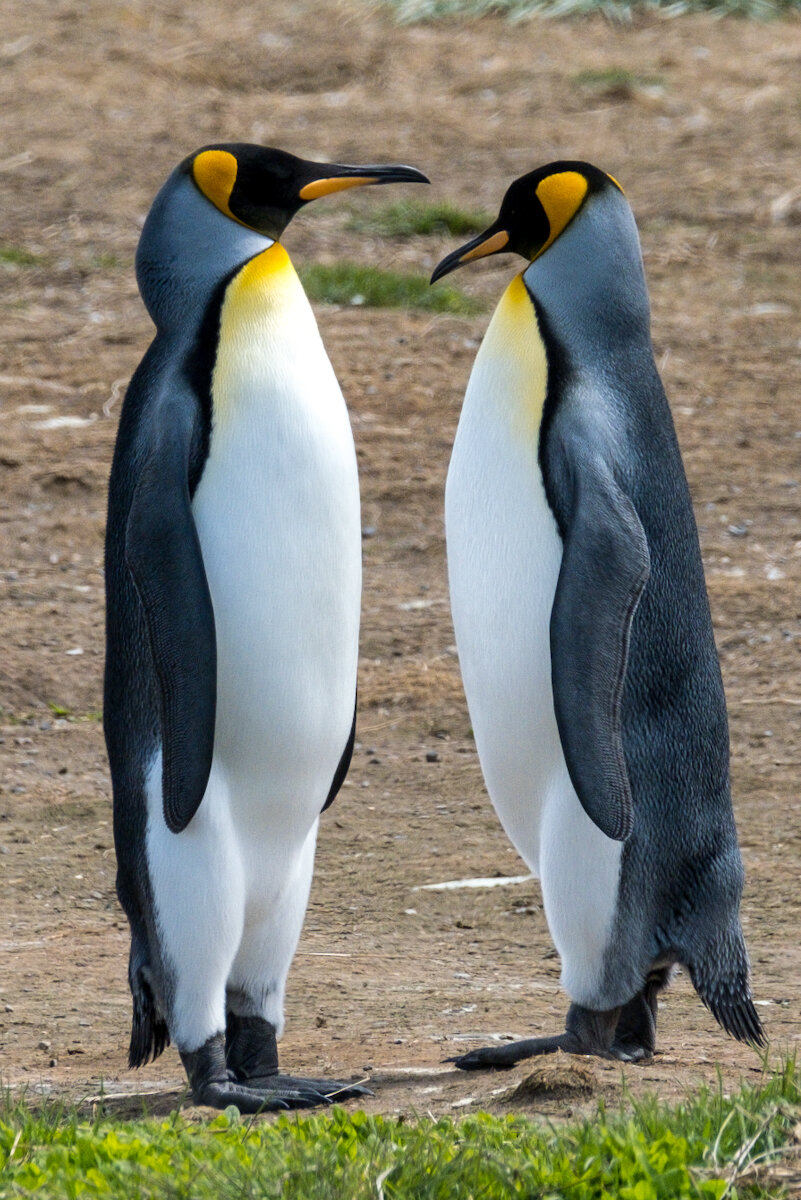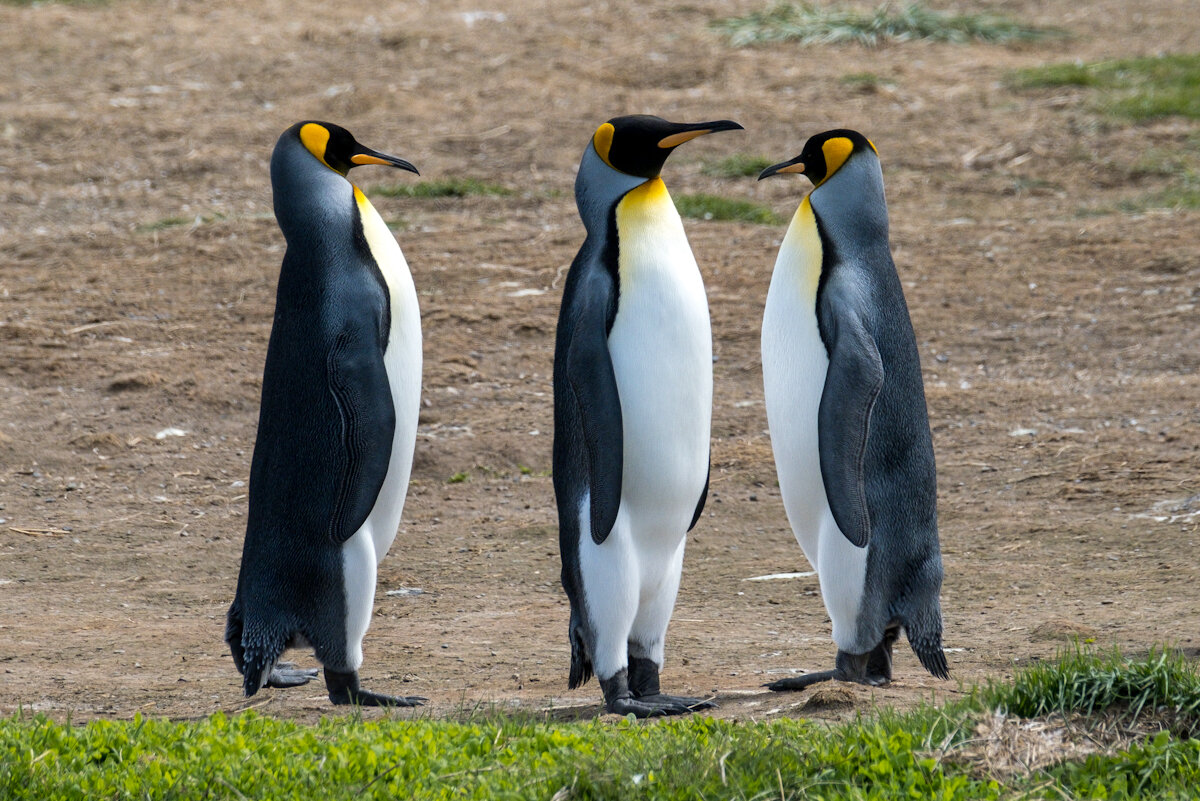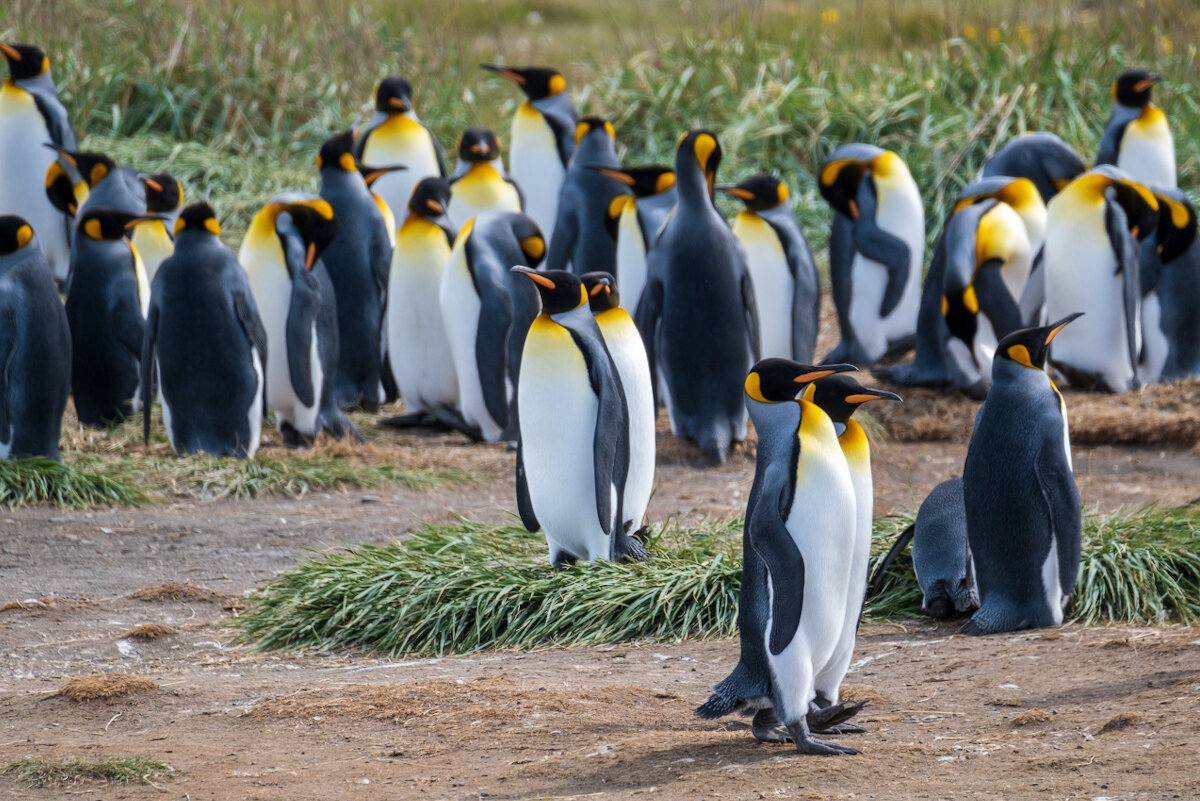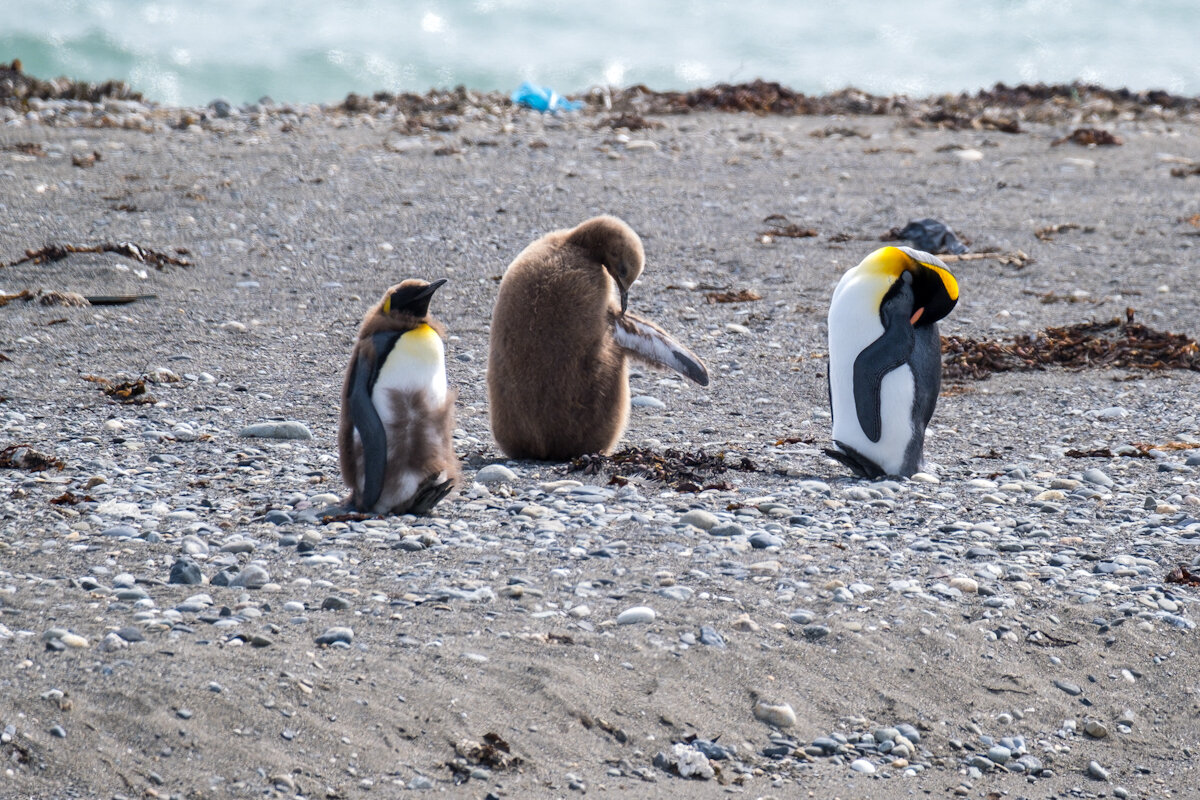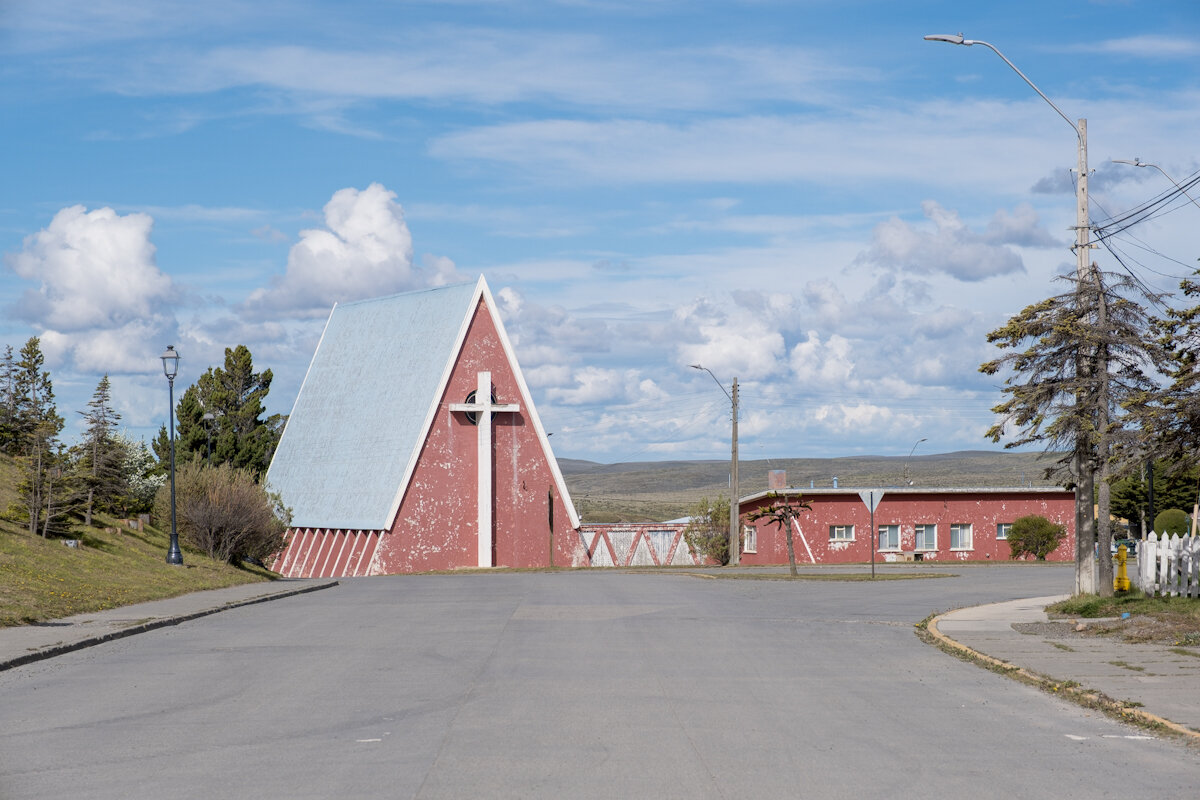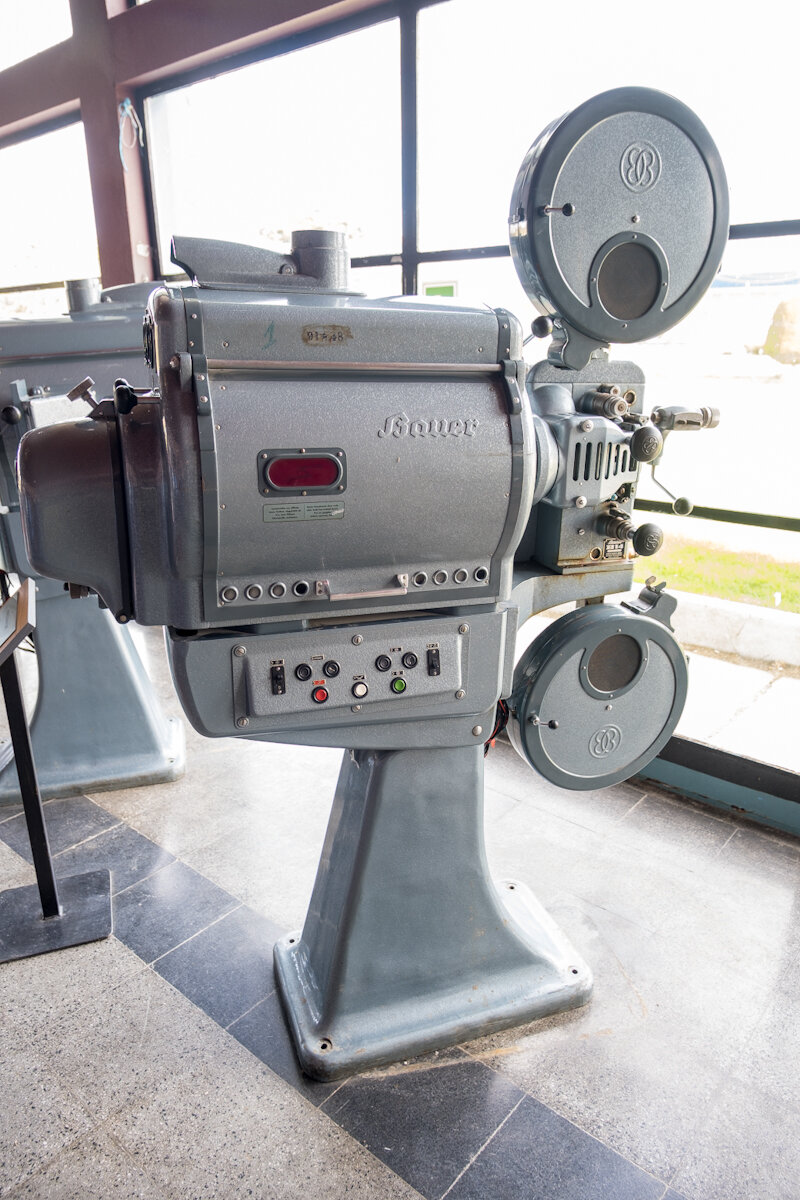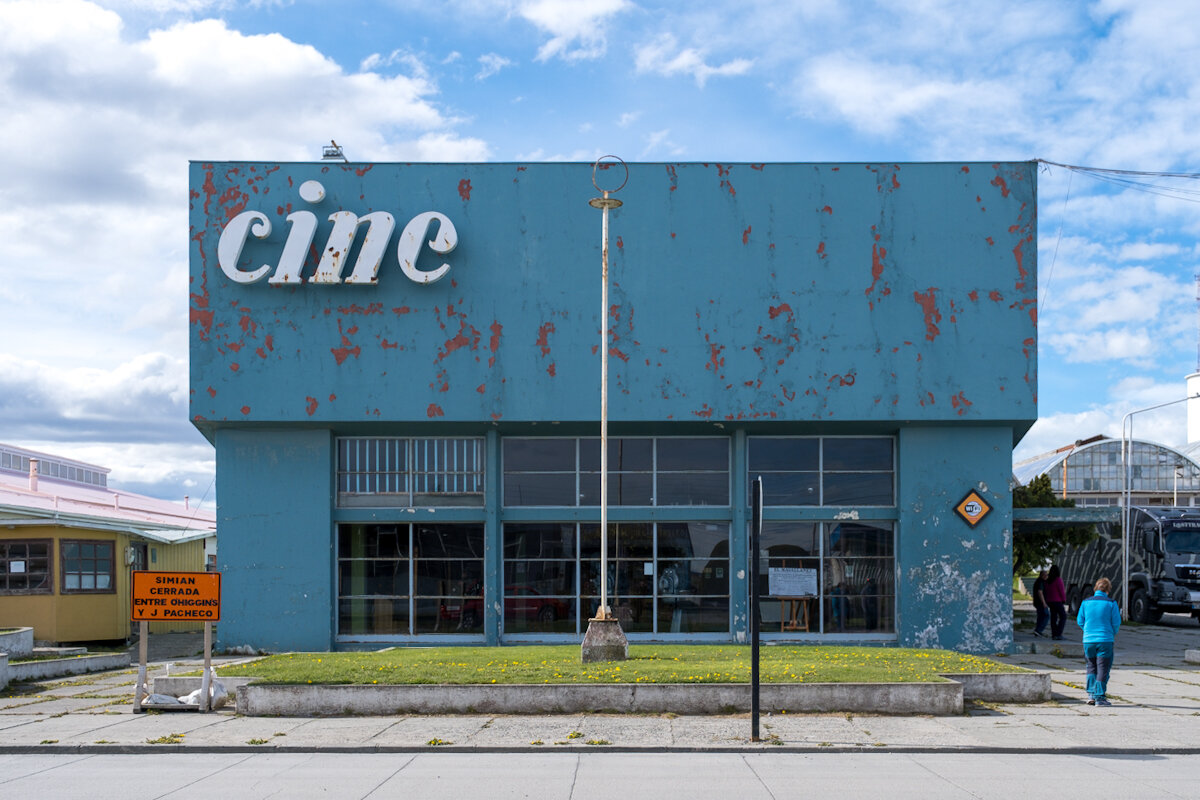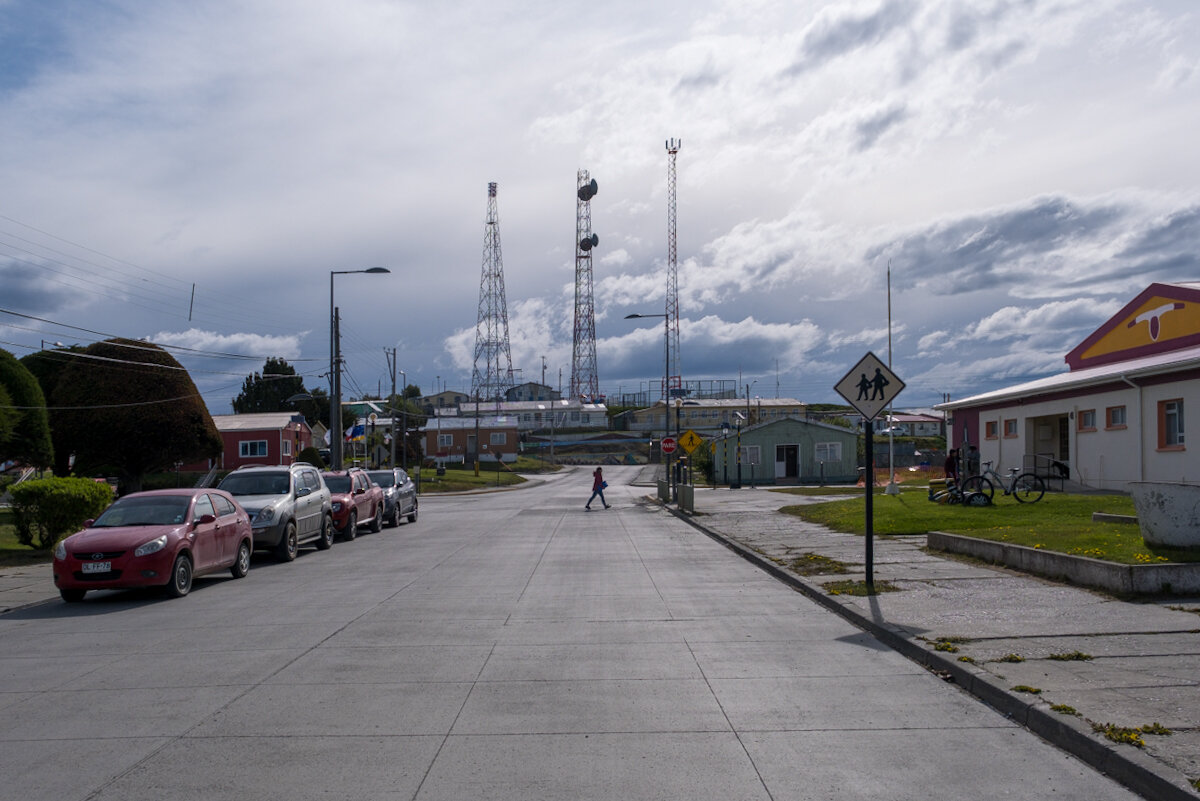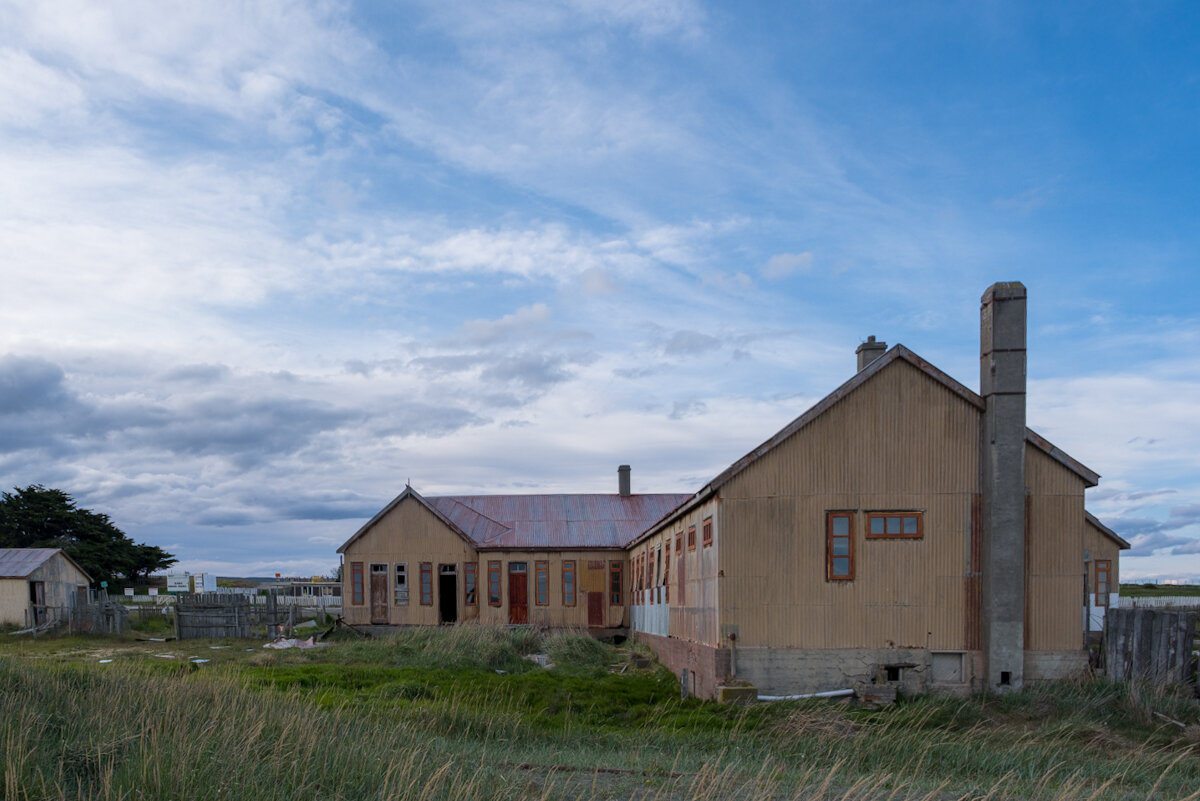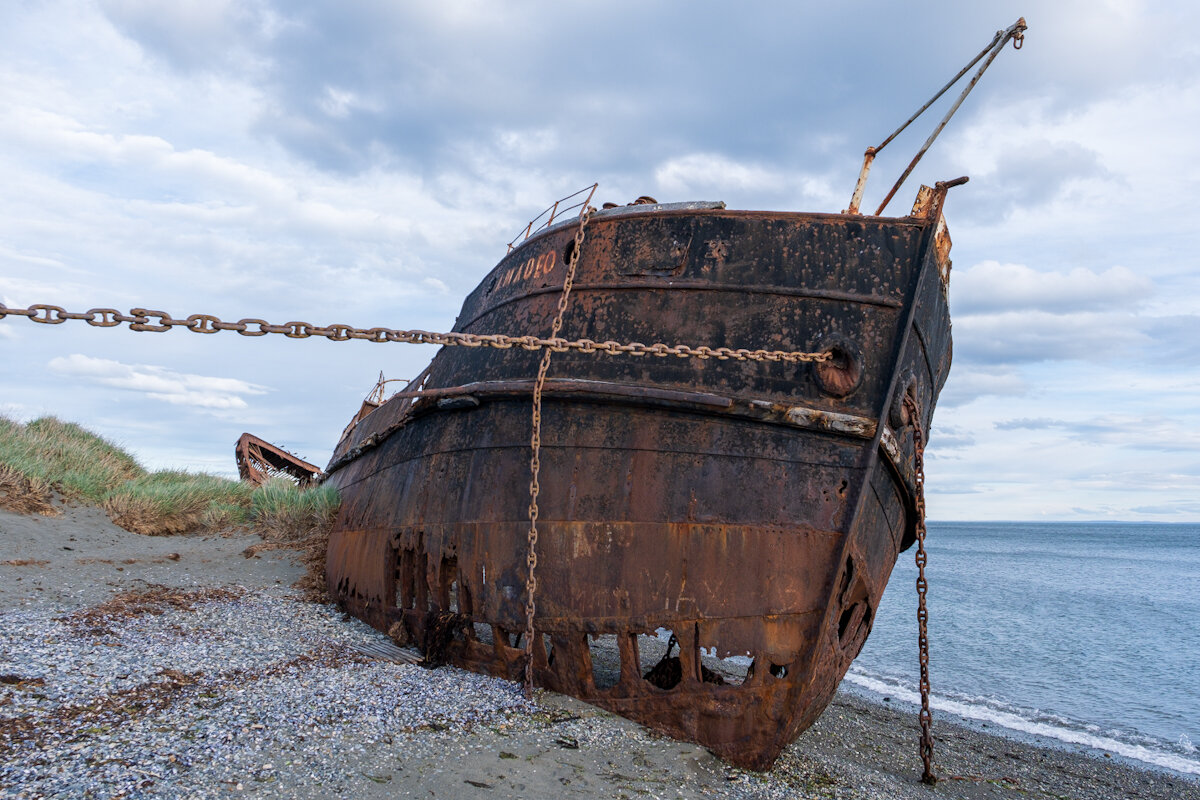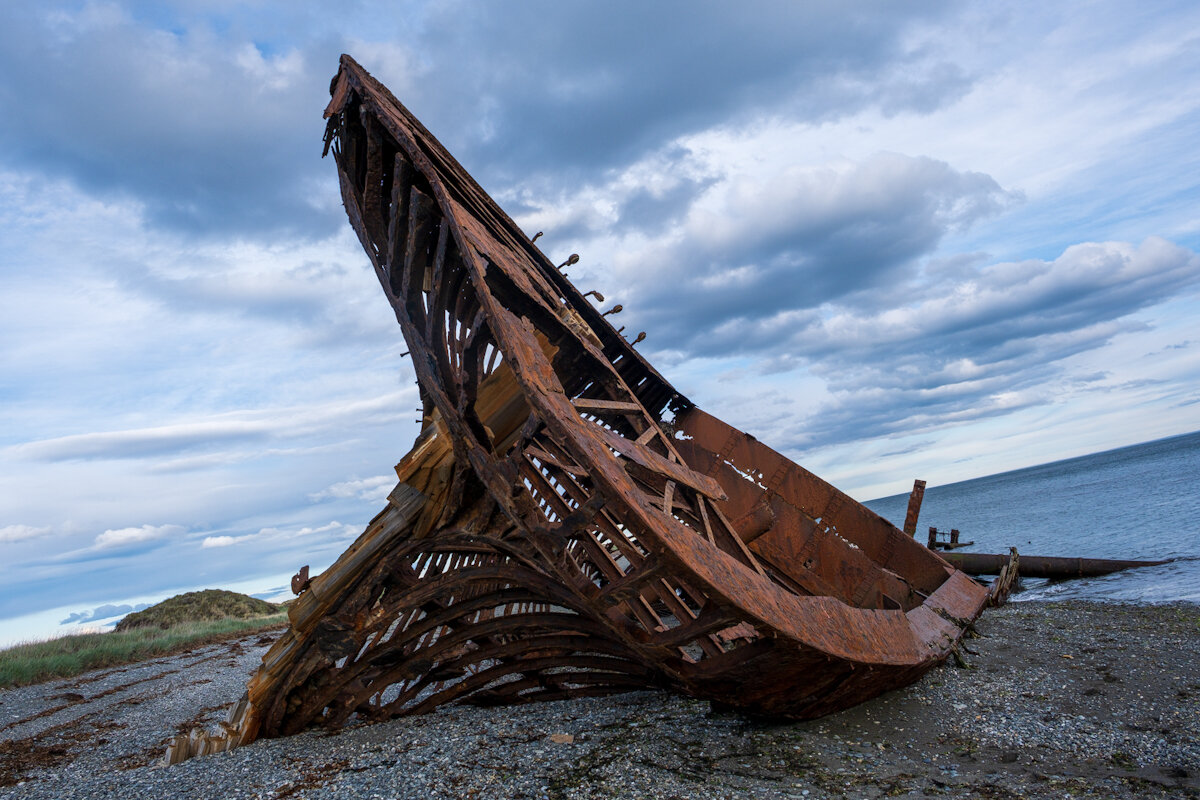This was a day trip from Punta Arenas. First stop was Porvenir where we learned some more about the indigenous people who inhabited southern Patagonia before Europeans arrived.
Then we went to a super excellent King Penguin colony, miles from anywhere on Inutil Bay. There is only one species of penguin that are senior to these - Emperors. To see an Emperor you need to get below the Antarctic circle and hire a private helicopter to go the last 100 miles or so. So within reason we think we have nailed it on the Penguin front. Kings are better looking anyway.
After that we went to Cerro Sombrero, a town built by the Chilean state oil company in the 60s. You can see it's pretty surreal. We then crossed back over the Strait of Magellan, stopping off at Estancia San Gregorio before returning to Punta Arenas.
Some observations…
One reason travel is so valuable is that whole cultures can otherwise remain unseen and unknowable if you do not know other languages. At least at Internet level, there is very little writing in English about the indigenous people of Patagonia or, for that matter, about social history in South America pre- or post-colonial. What there is is startlingly lacking in detail. Visits to local museums, historic sites, and guides we met opened the tiniest crack for a non-Spanish-speaking-European to get a glimps of what I suddenly realised was a whole other world. I mean, of course its obvious with hindsight. Whole swathes of culture from the Spanish world and pre-colonial American cultures have never been translated into English. Like as not, the Anglophone world is an impenetrable mystery to some other cultures. But it is one of those things that hits you quite hard when you actually experience it.
Needless to say, the story of the Patagonian people ends in tragedy as it does for all peoples who are unable to defend themselves against colonial invasions. The various peoples of middle and Southern Chile and Argentina actually held off both the Incas and the Spanish and it wasn't until the late 19th century that a big enough profit motive was found and large scale exploitation of land and labour became feasible and inevitable. The native people were forced out of their way of life and into wage slavery or hunted like animals for financial reward. The profit came from sheep farming and export of wool to Britain via the Falklands. Estancia San Gregorio used to process hundreds of thousands of sheep each year. The industry declined steeply when wool prices plummeted after WW1 with immigrant workers and descendents of the natives bearing the economic brunt. In Argentina they were shot in their hundreds when they rose up in the early 1920s - mostly those of ‘Indian’ appearance. An ominous precursor of the brutality that would be deployed against labour organisers and activists in Chile and Argentina in the second half of the 20th century.
It was noted in a museum exhibit that this history is made more difficult to stare down for Argentinians since more than 50% of the current population have indigenous DNA. An awkward mirror from which both the victim and purpetrator stare back.
